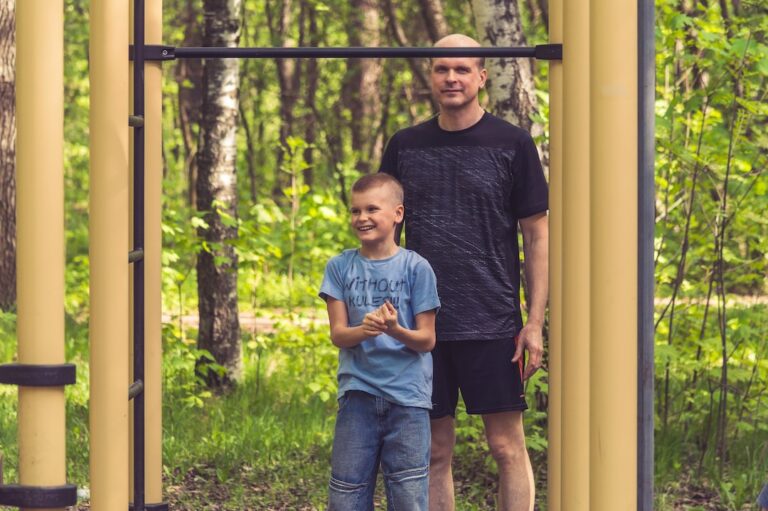Fearful Avoidant Attachment: 7 Traits, Causes & How To Fix
Growing up, I always knew that being a mother would be the most rewarding and challenging role I would ever take on. Every decision I make, every action I take, is fueled by an intense love and desire to provide the best for my child. One aspect of parenting that I have recently come across and have been researching extensively is the concept of fearful avoidant attachment. It is essential for parents to understand the traits, causes, and how to fix this attachment style to support their child’s emotional development effectively.
What is Fearful Avoidant Attachment?
Fearful avoidant attachment is a specific type of attachment style that develops in childhood due to various factors such as inconsistent caregiving, trauma, or abuse. Children with this attachment style have a deep fear of both intimacy and rejection. They often struggle to form and maintain secure emotional connections with others, including their parents, which can significantly impact their relationships and overall well-being throughout their lives.
Traits of Fearful Avoidant Attachment
Recognizing the traits associated with fearful avoidant attachment can help parents identify this attachment style in their child and take appropriate steps to support them. Here are seven common traits:
- Fear of Intimacy: Children with fearful avoidant attachment often feel overwhelmed by emotional closeness and may actively avoid it.
- Difficulty Trusting Others: These children find it challenging to trust others, including their parents, due to fear of getting hurt or rejected.
- Emotional Ambivalence: They may display conflicting emotions, such as a desire for connection and a simultaneous fear of being vulnerable.
- Fear of Rejection: Children with fearful avoidant attachment are often preoccupied with the fear of rejection and may struggle with self-esteem issues.
- Self-Reliance: They tend to rely on themselves for emotional support and may struggle to ask for help or open up about their feelings.
- Difficulty Forming Close Relationships: These children often find it challenging to form deep, meaningful connections with others due to their fear and avoidance of intimacy.
- Prone to Emotional Outbursts: Fearful avoidant children may exhibit intense emotional outbursts when they feel overwhelmed or threatened emotionally.
Causes of Fearful Avoidant Attachment
Understanding the causes of fearful avoidant attachment can help parents develop empathy and provide the necessary support for their child. While each child’s experience is unique, some common causes include:
- Inconsistent Caregiving: Inconsistent or neglectful caregiving can lead to a lack of trust and emotional insecurity in children.
- Childhood Trauma: Traumatic experiences, such as physical or emotional abuse, can deeply impact a child’s ability to form healthy attachments.
- Parental Rejection: When parents consistently reject or dismiss their child’s emotional needs, it can reinforce the fear of rejection and intimacy.
- Overprotective Parenting: Overprotective parenting can inadvertently hinder a child’s emotional development and independence.
- Inherited Traits: Some children may have a genetic predisposition towards anxious or avoidant attachment styles.
How to Fix Fearful Avoidant Attachment
While overcoming fearful avoidant attachment may require professional help, there are several strategies parents can implement to support their child’s emotional growth:
- Empathy and Understanding: Show empathy towards your child’s fears and emotions. Validate their feelings and let them know it’s okay to be vulnerable.
- Consistent and Unconditional Love: Provide a secure and loving environment where your child feels accepted and cherished unconditionally.
- Positive Reinforcement: Celebrate your child’s efforts and successes, no matter how small. Encourage them to take risks and try new experiences.
- Building Trust: Be reliable and consistent in your responses to your child’s emotional needs. Build trust through open communication and follow-through.
- Model Healthy Relationships: Demonstrate healthy and secure relationships in your own life, as children learn a great deal from observing their parents.
- Encourage Emotional Expression: Create a safe space for your child to express their emotions and thoughts without fear of judgment or rejection.
- Seek Professional Help: If your child’s fearful avoidant attachment significantly impacts their daily life and relationships, consider seeking guidance from a mental health professional.
Frequently Asked Questions
Q: Can fearful avoidant attachment be changed?
A: Yes, with the right support and interventions, children with fearful avoidant attachment can develop more secure attachment styles over time.
Q: How can I differentiate between normal shyness and fearful avoidant attachment?
A: Fearful avoidant attachment goes beyond shyness and involves a deep fear of both intimacy and rejection. It significantly impacts a child’s ability to form and maintain healthy relationships.
Q: Is fearful avoidant attachment permanent?
A: No, with the right therapeutic approaches and a secure and supportive environment, children with fearful avoidant attachment can develop healthier attachment styles.
Attachment Anxiety: 19 Signs, Causes & How to Heal – A Comprehensive Guide
Understanding and Overcoming Middle Child Challenges: Nurturing Your Middle Child for Success
Nurturing Your Child’s Emotional Well-Being: A Mother’s Guide to Understanding and Supporting Anxious Avoidant Attachment
How to Raise a Successful Child: 7 Essential Tips for Thriving Parenting
How to Handle Tantrums in 5-Year-Olds: Expert Tips for Empathetic Parenting
When Do Kids Become Adults? Supporting Your Child’s Journey Towards Adulthood
The Power of Parental Involvement: Unlocking Academic Success and Effective Communication
Building a Strong Foundation: Becoming a Secure Base for Your Child
The Power of Parenting: Unveiling the Difference Between Authoritative and Authoritarian Styles
Fearful Avoidant Attachment in Parenting: Understanding, Supporting, and Nurturing Your Child’s Emotional Growth
Positive Reinforcement: 10 Powerful Techniques for Positive Parenting
Understanding the Power of Secure Attachments: A Guide for Parents
Understanding and Managing Oppositional Defiant Disorder (ODD) in 5-Year-Old Children: Practical Strategies and Support
Internalizing Behavior in Children: Understanding, Examples, and Support
A Guide to Nurturing a Secure Bond with Your Child
As parents, it is our responsibility to understand and address our child’s needs, even when they might be challenging to comprehend. By recognizing the traits, causes, and ways to fix fearful avoidant attachment, we can provide the necessary support to help our children develop secure emotional connections and thrive in their relationships both now and in the future.
















